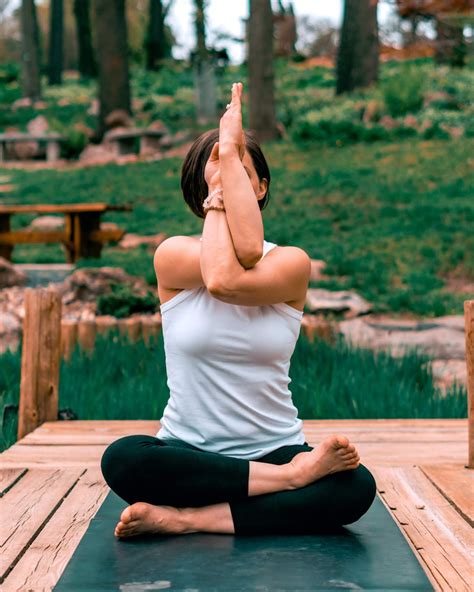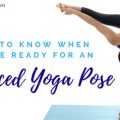Choosing the Right Yoga Style: 7 Essential Questions to Guide Your Practice
Yoga offers a wide array of styles, each with unique benefits and focuses. With so many options available, it can be overwhelming to determine which one suits your needs and preferences best. Whether you are a beginner or an experienced practitioner, asking the right questions will help you select the yoga style that aligns with your goals, body type, and lifestyle. This guide breaks down the key considerations to make an informed decision and enhance your practice.
1. What Are Your Goals?
Before diving into a specific yoga style, it’s crucial to identify your objectives. Different styles offer distinct benefits. For example:
- Physical Fitness: If your goal is to build strength, improve flexibility, and enhance cardiovascular health, Vinyasa or Ashtanga yoga might be ideal.
- Stress Relief: For relaxation and stress management, Restorative or Yin yoga focuses on deep stretches and meditative poses.
- Spiritual Growth: Styles like Kundalini yoga integrate breathing techniques, mantras, and meditation to promote spiritual awareness and energy awakening.
Matching your yoga practice to your goals ensures you receive the maximum benefits and maintain a consistent practice.
2. What Is Your Fitness Level?
Yoga styles vary in intensity, and it’s important to choose one that matches your physical capabilities. Here’s a table that compares different styles based on intensity and fitness level:
| Yoga Style | Intensity Level | Recommended Fitness Level |
|---|---|---|
| Hatha Yoga | Low to Moderate | Beginner to Intermediate |
| Ashtanga Yoga | High | Intermediate to Advanced |
| Vinyasa Yoga | Moderate to High | Intermediate |
| Yin Yoga | Low | All Levels |
| Power Yoga | High | Advanced |
Understanding your fitness level helps prevent injury and ensures that your yoga experience is both safe and beneficial.
3. Do You Prefer a Structured or Flexible Practice?
Some people thrive in highly structured environments, while others prefer a more flexible and personalized approach. Consider these options:
- Structured Practice: Ashtanga yoga follows a strict sequence of poses that remain consistent in every session, making it ideal for those who appreciate routine and discipline.
- Flexible Practice: Vinyasa yoga, on the other hand, offers more freedom, as sequences vary from class to class. This style suits individuals who enjoy creativity and diversity in their practice.
Choosing between structure and flexibility will determine the style that keeps you motivated and engaged in the long run.
4. How Much Time Can You Dedicate to Your Practice?
Your schedule and availability play a key role in selecting the right yoga style. Some practices are time-intensive, while others can be adapted to fit shorter periods. Here’s a comparison:
| Yoga Style | Typical Session Duration | Frequency |
|---|---|---|
| Ashtanga Yoga | 60-90 minutes | Daily |
| Restorative Yoga | 60 minutes | Weekly |
| Power Yoga | 45-60 minutes | 3-4 times a week |
| Yin Yoga | 45-75 minutes | 2-3 times a week |
| Hatha Yoga | 60 minutes | 2-3 times a week |
Choosing a style that aligns with your availability ensures you can commit consistently, a key factor in reaping the long-term benefits of yoga.
5. Do You Have Any Injuries or Physical Limitations?
If you have existing injuries or physical limitations, it’s crucial to choose a yoga style that accommodates these needs. For example:
- Low-Impact Options: Yin and Restorative yoga are gentle on the joints and muscles, making them suitable for individuals with physical restrictions or those recovering from injury.
- Therapeutic Focus: Iyengar yoga uses props like blocks and straps to assist in poses, allowing individuals with limited mobility to achieve correct alignment and gain the benefits of the practice safely.
Always consult with a healthcare professional or a certified yoga instructor when choosing a style that considers your physical condition.
6. Are You Seeking a Group or Individual Experience?
Yoga can be practiced in various settings, from group classes to private sessions or even self-guided home practice:
- Group Experience: Many styles, such as Vinyasa or Hot yoga, are popular in group settings, providing a community environment and collective energy that can enhance motivation.
- Individualized Practice: Private classes or personalized styles like Yoga Therapy focus on tailoring the practice to your specific needs and progress, allowing for more attention and adjustments.
Deciding between a social or personal experience will help you choose a practice setting that maximizes your comfort and growth.
7. What Is Your Preferred Environment?
Some yoga styles require specific environments to enhance the practice:
- Heated Studios: Hot yoga, such as Bikram, takes place in heated rooms, which are designed to help detoxify the body through sweat and deepen stretches. It’s ideal for those comfortable in warmer temperatures.
- Natural Settings: Styles like Outdoor Yoga capitalize on the calming effects of nature, offering a connection to the environment while practicing.
Considering your comfort and preference for practice environments will contribute to a fulfilling yoga experience.
Historical Context
Understanding the origins of yoga styles can also guide your decision. Traditional styles like Hatha and Ashtanga have roots in ancient Indian practices, while modern adaptations like Power Yoga or Hot Yoga emerged in the West to accommodate contemporary fitness demands. Knowing these distinctions helps in choosing a style that resonates with your values and cultural appreciation.
Current State Analysis
The modern yoga landscape offers a blend of traditional and contemporary styles, influenced by various fitness trends and holistic health approaches. With increasing scientific studies validating the benefits of yoga, it has gained popularity in diverse settings, from gyms to workplaces. However, this also means that some variations prioritize physical intensity over mindfulness, making it essential to choose carefully based on your authentic needs and goals.
Practical Applications
Incorporating yoga into your routine can provide numerous physical and mental health benefits. However, aligning the style with your lifestyle is key. For example, busy professionals may find quick Vinyasa sessions more feasible, while retirees might prefer the meditative pace of Yin yoga. Customizing your yoga practice ensures that it fits into your daily life and contributes to long-term wellness.
Case Studies
Case studies illustrate how individuals with different needs find the right yoga style:
- Case 1: Emily, a High-Stress Executive: Emily chose Restorative Yoga to manage stress and enhance relaxation. After practicing for six months, she reported a significant improvement in her stress levels and sleep quality.
- Case 2: Mark, a Fitness Enthusiast: Mark sought a physically demanding style and opted for Ashtanga Yoga. He found it challenging yet rewarding, as it complemented his existing fitness regimen and improved his flexibility and strength.
Stakeholder Analysis
Different groups influence the yoga experience, from instructors and studio owners to students and healthcare professionals. Instructors play a crucial role in delivering safe and effective classes, while students’ feedback shapes the evolving practice of yoga. Additionally, healthcare professionals increasingly recommend yoga as a therapeutic tool, emphasizing its adaptability and holistic benefits.
Implementation Guidelines
Implementing a yoga practice requires careful consideration of your schedule, goals, and resources:
- Define your objectives clearly and choose a style that aligns with them.
- Assess your schedule and fitness level to ensure consistency.
- Start with beginner classes or consult a professional to prevent injury.
- Gradually increase intensity or duration as your practice evolves.
Ethical Considerations
Ethics in yoga practice encompass respecting the origins of yoga and practicing inclusivity. With yoga’s increasing commercialization, it’s important to choose classes and studios that honor the tradition and promote inclusivity, ensuring that people of all backgrounds and abilities can participate. Moreover, transparency in instructor certifications and safety standards should be prioritized.
Limitations and Future Research
While yoga has proven benefits, it’s not a one-size-fits-all solution. Limitations include the risk of injury, especially in intense styles like Power Yoga, if not properly guided. Additionally, more research is needed to explore yoga’s long-term impact on mental health and chronic illness management. Future studies should also investigate the effectiveness of yoga across diverse populations, ensuring inclusivity and accessibility in its practice and benefits.
Expert Commentary
Experts in the field suggest that while yoga offers diverse styles for different needs, the most effective approach is one that balances physical, mental, and spiritual well-being. It’s vital to choose a practice that resonates personally, is safe, and can be sustained long-term. Yoga’s adaptability means that there’s likely a style for everyone; the key is finding the right fit through careful consideration and expert guidance.








